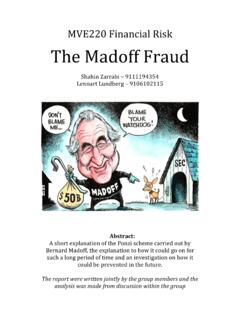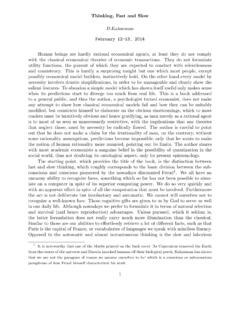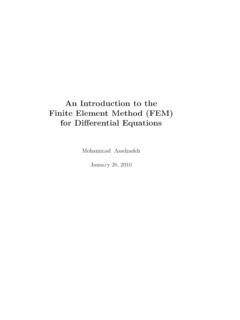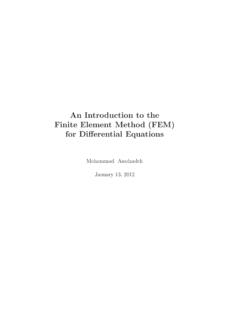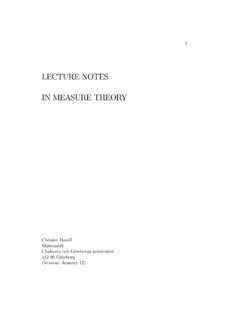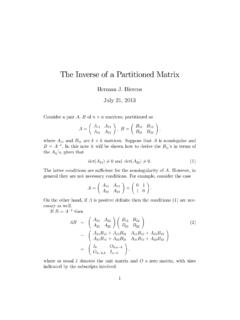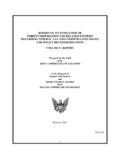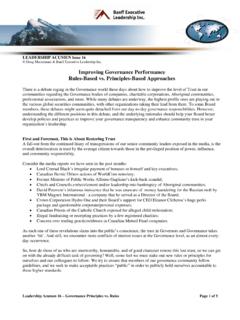Transcription of The Enron scandal - Chalmers
1 The Enron scandal Tobias Pavel 910422 Mylene Encontro 850224 Chalmers University of Technology Finacial Risk, MVE220 Examiner: Holger Rootz n 2012-12-02 G teborg This report has been written and analyzed by both group members jointly. Abstract From the 1990's until the fall of 2001, Enron was famous throughout the business world and was known as an innovator, technology powerhouse, and a corporation with no fear. The sudden fall of Enron in the end of 2001 shattered not just the business world but also the lives of their employees and the people who believed that their soar to greatness was genuine. Their collapse was followed by a series of revelations on how they manipulated their success. Introduction Enron shocked the world from being America s most innovative company to America's biggest corporate bankruptcy at its time.
2 At its peak, Enron was America's seventh largest corporation . Enron gave the illusion that it was a steady company with good revenue but that was not the case, a large part of Enron s profits were made of paper. This was made possible by masterfully designed accounting and morally questionable acts by traders and executives. Deep debt and surfacing information about hiding losses gave the company big problems and in the late 2001 Enron declared bankruptcy under Chapter 11 of the United States Bankruptcy Code. Many factors affected Enron 's surge to the top and its sudden fall. In this report we will discuss and present what we think were the main reasons of their rise and fall. Enron s surge to the top From energy to trading Kenneth Lay was one of the key spokesmen when it came to deregulation of the energy market, much because of his personal connection to the Bush family.
3 In the early 1990's the United States congress approved a legislation that deregulated the sale of natural gas. Not long before this Lay was one of the initiators that made it possible to sell electricity on the free market. This major deregulation in the energy market gave Enron the opportunity to sell their energy at higher prices, which equivalently lead to greater revenue. This was the start of Enron 's journey from an energy company to a trading company. The focus went from energy markets to finding new ways of earning money. Large investments were made around the world to expand its business and open itself for new markets. Enron was named America s most innovative company six years in a row by Fortune's Most Admired Companies survey.
4 This made the company attractive for top graduates out of the best universities across America, which gave the company more competence and a big urge to strive forward. The strive forward was the same as the aim to increase the stock price. Enron employees were partly paid in stocks so increasing the stock price became a main interest. Mark-to-market Accounting In 1990, Jeffery Skilling joined Enron corporation and in 1997, he was appointed as the company's Chief Executive Officer. Skilling demanded to change Enron 's accounting system from a straightforward kind of accounting were Enron had listed actual revenue and costs of supplying and selling gas to the mark-to-market accounting system. The mark-to-market method requires estimations of future incomes when a long-term contract is signed.
5 These estimations were based on the future net value of the cash flow, costs related to the contract were often hard to predict. This means that the estimated income from projects were included in Enron 's accounting even though the money was not yet received and if there were any changes such as additional income or loss it would show up in subsequent periods. Investors were given misleading information because of the deviation in the estimations. Enron was the first non-financial company to use the mark-to-market method. The Securities and Exchange Commission gave Enron their approval to use the method on January 30,1992. (The smartest guy in the room, 2004) Special Purpose Entity Special purpose entities are legal entities that are created only to carry out a specific or temporary task.
6 The purposes are to handle assets either by funding or by risk management. A sponsor creates the entities but the funding comes from investors. The financial reporting has many rules about if the entity is separated from the sponsor. In Enron 's case the special purpose entities were not only used to dodge the traditional accounting conventions but also so they could hide debts. The entities made it possible for Enron to underestimate, hide, its debts and overestimate its equity. A new strategy Enron was by 1992 the largest seller of natural gas in North America, their earnings before interest and taxes was $122 million. To grow further, Enron followed a differentiation strategy that were based on that the company owned and operated a variety of assets, pipelines, broadband services, paper plants, water plants and electricity plants.
7 Enron did not only make money on its assets, it also traded actively with contracts of the products and services it provided, making further revenue. This made Enron a favorite among investors and between 1990 and end of 1998 Enron 's stock price increased 311%. The increase didn't stop there, 1999 it increased 56% and 2000 it increased an additional 87%. The index for the market the same two years was +20% and -10%. Enron 's stock price was dollars and its market value was just above 60 billion dollars the 31 December of 2000. (The fall of Enron , 2003) The Commodity Futures Modernization Act of 2000, which ensured the deregulation of over-the-counter derivatives, helped Enron with their derivatives business. One example was during the California electricity crisis (2000-2001) where they manipulated the California energy market and sent electricity prices surging by at least a factor of eight.
8 During that time, the price of natural gas was trading as much as $60 per thousand cubic feet in California (which was previously selling for about $3 per thousand cubic feet). This kind of manipulation increased Enron 's stock price and revenues. But this not so clever manipulation of Enron made itself a political target and accelerated the ruins of their finances. Enron s collapse Mark-to-market Accounting The use of mark-to-market accounting later backfired. The company's aggressive accounting had corrupted Enron 's books and had allowed the company to be far too optimistic in it's assumptions about the future profits. Cash is a necessity for any company to run and Enron mostly had paper revenue, so by the middle of 2001, they came to the conclusion that the cash crisis had struck them.
9 The Enron Culture In Enron , bonuses and incentives in form of cash or stock options came in bundles, only if you were good enough and if you were considered one of the moneymakers. This mentality made Enron a very competitive work place. Everyone was in a hurry to close deals (good or bad) because right after a closed deal, they got their bonuses regardless of the result of the deal. This became a problem since there were a lot of projects being made but no follow-ups. No one wanted to be responsible of a done deal, they just wanted to close it and get their bonus. Performance review committee was also a factor why employees in Enron were so aggressive. It created a culture within Enron that replaced cooperation with competition. The committee gave ratings from 1 to 5, 1 being the highest and in Enron , the 1 mark meant that you will get a good sum of bonus.
10 If you were in the lowest 5 to 6 percent of this rankings, that meant that you are not good enough to stay in Enron and you had to pack your things because you will lose your job anytime soon. Special Purpose Entity In order to hide losses and fabricate earnings, Andrew Fastow created multiple SPEs. Some SPE's are Chewco, LJM1, LJM2 and Raptor. When news about the debt hiding surfaced, Enron 's stock began to fall and several SPEs began to collapse as a result of the drop of Enron 's stock price. For an SPE to legal, they have to satisfy 3 requirements: (1) at least 3% of the equity had to come from outside investors ( not- Enron ), (2) the entity could not be controlled by Enron , and (3) Enron was not liable for any loans or other liabilities. (Bryce, 2002) An internal investigation of the SPEs showed they were not independent since they were run by Enron employees ( LJM was run by Andy Fastow while ChewCo was run by Kopper).
